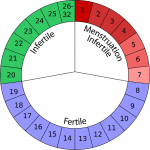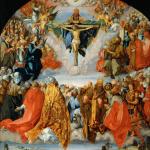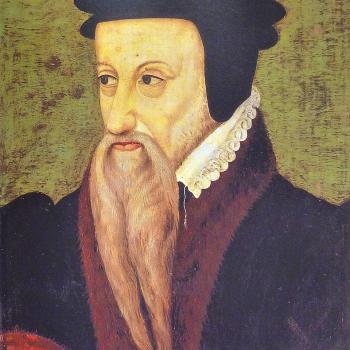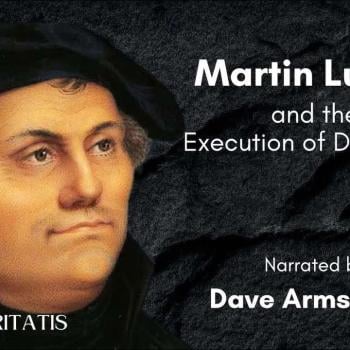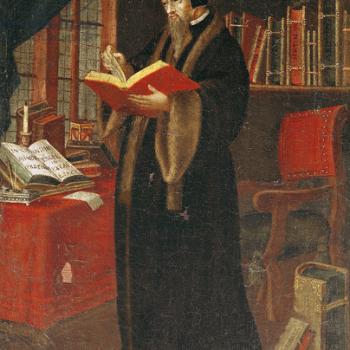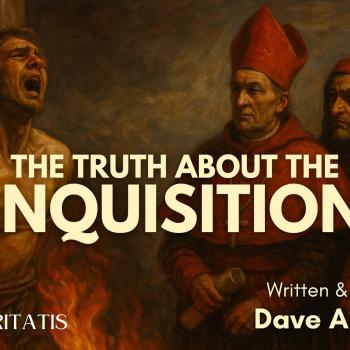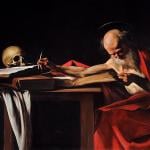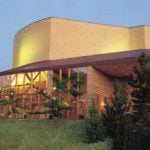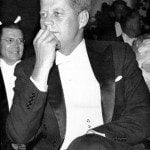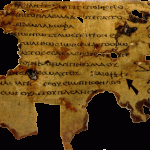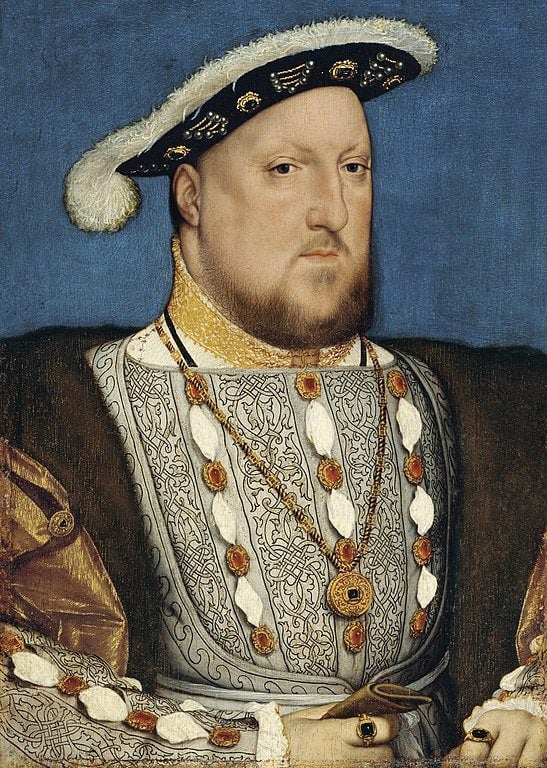
[Learn more about the English punishment of being hanged, drawn, and quartered]
See related papers:
Total of all documented martyrs and heroic confessors for the Catholic faith, persecuted by English “head of the Church” royalty and its minions, in my four papers:
1375
Elizabeth Barton (The Holy Maid of Kent)
Born c. 1506. Benedictine nun. The career of this visionary, whose prophecies led to her execution under Henry VIII, has been the source of a historical controversy which resolves itself into the question: Was she gifted with supernatural knowledge or was she an impostor? From the first her utterances assumed a religious character and were “of marvellous holiness in rebuke of sin and vice.” She protested “in the name and by the authority of God” against the king’s projected divorce. To further her opposition, besides writing to the pope, she had interviews with Fisher, Wolsey, and the king himself. Owing to her reputation for sanctity, she proved one of the most formidable opponents of the royal divorce, so that in 1533 Cromwell took steps against her and, after examination by Cranmer, she was in November committed to the Tower. Elizabeth and her companions were hanged and beheaded at Tyburn on 20 April, 1534, when she is said to have repeated her confession. Protestant authors allege that these confessions alone are conclusive of her imposture, but Catholic writers, though they have felt free to hold divergent opinions about the nun, have pointed out the suggestive fact that all that is known as to these confessions emanates from Cromwell or his agents; that all available documents are on his side; that the confession issued as hers is on the face of it not her own composition; that she and her companions were never brought to trial, but were condemned and executed unheard; that there is contemporary evidence that the alleged confession was even then believed to be a forgery. For these reasons, the matter cannot be considered as settled, and unfortunately, the difficulty of arriving at any satisfactory and final decision now seems insuperable.
Edward Bocking
Benedictine monk. Hanged and beheaded at Tyburn on 20 April, 1534.
John Dering
Benedictine. Hanged and beheaded at Tyburn on 20 April, 1534.
Henry Gold
Priest. Hanged and beheaded at Tyburn on 20 April, 1534.
Richard Masters
Priest. Hanged and beheaded at Tyburn on 20 April, 1534.
Hugh Rich
Franciscan. Hanged and beheaded at Tyburn on 20 April, 1534.
Blessed John Hale (or, Haile)
Priest. Refused to recognize Henry VIII as head of the Church. Was hanged, drawn and quartered at Tyburn on May 4, 1535.
St. John Houghton
Born c. 1486. In 1531, he became abbot of the Carthusian Charterhouse of Beauvale in Nottinghamshire. Refused to recognize Henry VIII as head of the Church. From his prison cell in the Tower, St. Thomas More saw the three Carthusian priors drawn to Tyburn on hurdles and exclaimed to his daughter Meg: “Look, Meg,” he said, “these blessed Fathers be now as cheerfully going to their deaths as bridegrooms to their marriage!” Was hanged, drawn and quartered at Tyburn on May 4, 1535. After he was hung, he was taken down alive, and the process of quartering him began. Catholic tradition relates that as Houghton was about to be quartered, as the executioner tore open his chest to remove his heart he prayed, “O Jesu, what wouldst thou do with my heart?” After his death, his body was chopped to pieces and hung in different parts of London.
St. Robert Lawrence
After joining the Carthusians, he served as prior of the Beauvale Charterhouse, Nottinghamshire, at the time when King Henry VIII of England broke with Rome and launched the Dissolution of the Monasteries. Refused to recognize Henry VIII as head of the Church. Was hanged, drawn and quartered at Tyburn on May 4, 1535.
St. Richard Reynolds
Born 1492. English Brigittine monk executed in London for refusing the Oath of Supremacy to King Henry VIII of England. Was hanged, drawn and quartered at Tyburn on May 4, 1535.
St. Augustine Webster
He became the prior of Our Lady of Melwood, a Carthusian house at Epworth, on the Isle of Axholme, North Lincolnshire, in 1531. Refused to recognize Henry VIII as head of the Church. Was hanged, drawn and quartered at Tyburn on May 4, 1535.
Blessed William Exmew
He studied at Christ’s College, Cambridge, and became a proficient classical scholar. Entering the London Charterhouse, he was soon raised to the office of vicar (sub-prior). Was hanged, drawn and quartered at Tyburn on 19 June, 1535. See more information under the entry for Blessed Humphrey Middlemore.
Blessed Humphrey Middlemore
Carthusian. Refused to recognize Henry VIII as head of the Church and so was thrown into prison, with Blessed Sebastian Newdigate and Blessed William Exmew, where they were treated with inhuman cruelty, being bound to posts with chains round their necks and legs, and compelled so to remain day and night for two weeks. They were then brought before the council, and required to take the oath. Not only did they refuse, but justified their attitude by able arguments from Scripture and the Fathers in favour of the papal claims. They were accordingly condemned to death, and suffered with the greatest fortitude and resignation (hanged, drawn and quartered) at Tyburn on 19 June, 1535.
Blessed Sebastian Newdigate
He was educated at Cambridge, and on going to Court became and intimate friend of Henry VIII and a privy councillor. He married and had a daughter, named Amphelys, but his wife dying in 1524, he entered the He was educated at Cambridge, and on going to Court became and intimate friend of Henry VIII. He married and had a daughter, named Amphelys, but his wife dying in 1524, he entered the London Charterhouse and became a monk there. Refused to recognize Henry VIII as head of the Church. He was thrown into the Marshalsea prison, where he was kept for fourteen days bound to a pillar, standing upright, with iron rings round his neck, hands, and feet. There he was visited by the king who offered to load him with riches and honours if he would conform. Was hanged, drawn and quartered at Tyburn on 19 June, 1535.
St. John Fisher (Bishop)
Born 1469. Fisher took the degree of B.A. in 1487, M.A. in 1491 and in the same year he was elected a fellow of his college, and was made Vicar of Northallerton, Yorkshire. In 1494 he resigned his benefice to become proctor of the university, and three years later was appointed Master of Michaelhouse, about which date he became chaplain and confessor to Margaret Beaufort, Countess of Richmond and Derby, mother of King Henry VII. On July 5, 1501, he received his doctorate in theology and ten days later was elected Vice-Chancellor of Cambridge University.
Fisher’s strategy was to assemble funds and attract to Cambridge leading scholars from Europe, promoting the study not only of ancient non-Christian Latin and Greek authors, but of Hebrew. He was in his heart and soul a priest, and placed great weight upon pastoral commitment, above all popular preaching by the endowed staff. Fisher’s foundations were also dedicated to prayer for the dead, especially through chantry foundations. Fisher had a wide and deep vision to which he dedicated all his personal resources and energies; a scholar and a man of prayer, harsh with himself, humble and conscientious.
By Papal Bull dated October 14, 1504, Fisher was appointed Bishop of Rochester at the personal insistence of Henry VII. Rochester was the poorest diocese in England and usually seen as a first step on an ecclesiastical career, but Fisher stayed there, presumably by his own choice, for the remaining 31 years of his life. He aimed at being a model bishop. Fisher maintained a passionate interest in the university of Cambridge. In 1504 he was elected Chancellor of Cambridge University, and was re-elected annually for ten years and then appointed for life. At this date also he is said to have acted as tutor to Prince Henry, afterwards Henry VIII. As a preacher his reputation was so great that in 1509, during which both King Henry VII and the Lady Margaret died, Fisher was appointed to preach the funeral oration on both occasions, the texts being still extant.
Fisher had denounced various abuses in the Church, urging the need of disciplinary reforms. On about 11 February 1526, at the King’s command, he preached a famous sermon against Luther at St Paul’s Cross, the open-air pulpit outside St Paul’s Cathedral in London. This was in the wake of numerous other controversial writings and the battle against heterodox teachings was to occupy increasingly his later years. When the question of Henry’s divorce from Queen Catherine of Aragon arose, Fisher became the Queen’s chief supporter and most trusted counselor. In this capacity he appeared on the Queen’s behalf in the legates’ court, where he startled his hearers by the directness of his language and most of all by declaring that, like St. John the Baptist, he was ready to die on behalf of the indissolubility of marriage. This statement was reported to Henry VIII, who was so enraged by it that he himself composed a long Latin address to the legates in answer to the bishop’s speech. Fisher’s copy of this still exists, with his manuscript annotations in the margin which show how little he feared the royal anger. The removal of the cause to Rome brought Fisher’s personal share therein to an end, but the king never forgave him for what he had done.
In May, 1532, Sir Thomas More resigned the chancellorship, and in June, Fisher preached publicly against the divorce. In August, William Warham, Archbishop of Canterbury, died, and Thomas Cranmer was at once proposed by Henry to the pope as his successor. In January, 1533, Henry secretly went through a form of marriage with Anne Boleyn. Cranmer’s consecration as a Bishop took place in March of the same year, and, a week later, Fisher was arrested. In March, 1534, Fisher was condemned to forfeit all his personal estate and to be imprisoned during the king’s pleasure. Parliament also passed in March, 1534, the Act of Succession, by which all who should be called upon to do so were compelled to take an oath of succession, acknowledging the issue of Henry and Anne as legitimate heirs to the throne, under pain of being guilty of misprision of treason. Fisher refused the oath and was sent to the Tower of London, April 26, 1534.
He was to remain in the Tower for over a year, and while he was allowed food and drink sent by friends, and a servant, he was not allowed a priest, even to the very end. A long letter exists, written from the Tower by Fisher to Thomas Cromwell, speaking of the severity of his conditions of imprisonment. Like Thomas More, the Bishop took the line that since the statute condemned only those speaking maliciously against the King’s new title, there was safety in silence. However, on May 7 he fell into a trap laid for him by Richard Rich, who was to perjure himself to obtain Thomas More’s conviction. Rich told Fisher that for his own conscience’s sake the King wished to know, in strict secrecy, Fisher’s real opinion. A priest, used to secrecy in matters of conscience, Fisher was taken in and said that he was convinced “that the King was not, nor could be, by the Law of God, Supreme Head in earth of the Church of England”. By saying this, he had fallen foul of the law. On Thursday June 17 he was put on trial in Westminster Hall before a court of seventeen, including Thomas Cromwell, Anne Boleyn’s father, and ten justices. The only testimony was that of Rich. Fisher was condemned to death: to be hanged, drawn, and quartered at Tyburn.
Henry VIII commuted the sentence to beheading, which was done on Tower Hill, on 22 June 1535. His last moments were thoroughly in keeping with his previous life. He met death with a calm dignified courage which profoundly impressed all present. His body was treated with particular rancour, apparently on Henry’s orders, being stripped and left on the scaffold till evening, when it was taken on pikes and thrown naked into a rough grave in the churchyard of Allhallows, Barking. There was no funeral prayer. A fortnight later it was laid beside that of Sir Thomas More in the chapel of St. Peter ad Vincula.
The bishop’s head was stuck upon a pole on London Bridge, but its ruddy and lifelike appearance excited so much attention that, after a fortnight, it was thrown into the Thames, its place being taken by that of Sir Thomas More, whose martyrdom occurred on July 6. John Fisher was a figure universally esteemed throughout Europe and notwithstanding the subsequent efforts of the English government, was to remain so.
St. Thomas More
(7 February 1478 – 6 July 1535). English lawyer, author, and statesman. During his lifetime he earned a reputation as a leading humanist scholar and occupied many public offices, including that of Lord Chancellor from 1529 to 1532. Refused to recognize Henry VIII as head of the Church. Before his sentencing, More spoke freely of his belief that “no temporal man may be the head of the spirituality”. He was sentenced to be hanged, drawn, and quartered (the usual punishment for traitors) but the king commuted this to execution by beheading. The execution took place on 6 July 1535. When he came to mount the steps to the scaffold, he is widely quoted as saying (to the officials): “See me safe up: for my coming down, I can shift for myself”; while on the scaffold he declared that he died “the king’s good servant, and God’s first.” Another statement he is believed to have remarked to the executioner is that his beard was completely innocent of any crime, and did not deserve the axe; he then positioned his beard so that it would not be harmed. His head was placed over London Bridge for a month and was rescued by his daughter, Margaret Roper, before it could be thrown in the River Thames. The steadfastness and courage with which More held on to his religious convictions in the face of ruin and death and the dignity with which he conducted himself during his imprisonment, trial, and execution, contributed much to More’s posthumous reputation, particularly among Catholics. More’s conviction for treason was widely seen as unfair, even among Protestants.
Pilgrimage of Grace (Uprising in Northern England: Late 1536 and 1537)
After the pilgrimage of grace and the rising of Lincolnshire many, probably several hundred, were executed, of whom no record remains. The following names, which do survive, are grouped under their respective abbeys or priories.
- Barlings: Matthew Mackerel [1537], abbot and Bishop of Chalcedon, Ord. Præm.
- Bardney: John Tenant [1537], William Cole [1537], John Francis [1537], William Cowper [1537], Richard Laynton [1537], Hugh Londale [1537], monks.
- Bridlington: William Wood, Prior.
- Fountains: William Thyrsk, O. Cist. [1537]
- Guisborough: James Cockerel [1537], Prior.
- Jervaulx: Adam Sedbar [1537], Abbot; George Asleby, monk [1537].
- Kirkstead: Richard Harrison [1537], Abbot; Richard Wade [1537], William Swale [1537], Henry Jenkinson [1537], monks.
- Lenten: Nicholas Heath [1537], Prior; William Gylham [1537], monk.
- Sawlet: William Trafford [1537], Abbot; Richard Eastgate [1537], monk.
- Whalley: John Paslew [1537], Abbot; John Eastgate [1537], William Haydock [1537], monks.
- Woburn: Robert Hobbes [1537], Abbot; Ralph Barnes [1537], sub-prior; Laurence Blonham [1537], monk.
- York: John Pickering, O.S.B. [1537], Prior.
- Place unknown: George ab Alba Rose, O.S.A.
- Priests: William Burraby [1537], Thomas Kendal[e] [1537], John Henmarsh [1537], James Mallet [1537], John Pickering [1537], Thomas Redforth [1537].
- Lords: Thomas Darcy [1537] and John Hussey [1537].
- Knights: Sir Francis Bigod [1537], Sir Stephen Hammerton [1537], Sir Thomas Percy [1537].
- Laymen (11): Robert Aske [hanged by chains in June 1537 in York], Robert Constable [1537], Bernard Fletcher [1537], George Hudswell [1537], Robert Leeche [1537], Roger Neeve [1537], George Lomley [1537], Thomas Moyne, Robert Sotheby [1537], Nicholas Tempest [1537], Philip Trotter [1537].
Blessed John Rochester
Born c. 1498. Carthusian priest and monk. He resolutely rejected the affirmation of the royal supremacy in matters ecclesiastical. Condemned to death on trumped up treason charges, he was hanged in chains from the city battlements in York until dead (beginning on May 11, 1537: this method of execution could take five or six days).
Blessed James Walworth
Carthusian priest and monk. Hanged in chains from the city battlements in York until dead (beginning on May 11, 1537).
Nine Carthusian Martyrs
On May 18, 1537, the twenty choir monks and eighteen laybrothers remaining in the London Charterhouse were required to take the Oath of Supremacy. Ten [26%] refused. Those refusing the oath were all sent on May 29 to Newgate Prison, and treated as had been their fellow Carthusians in June 1535. They were chained standing and with their hands tied behind them to posts in the prison. This time, however, no further proceeding was foreseen and they were simply left to die of starvation. Margaret Clement (nee Giggs), who had been brought up in the household of St Thomas More, bribed the gaoler to let her have access to the prisoners, and disguised as a milkmaid carried in a milk-can full of meat which she fed to them. She also relieved them as best she could of the filth. However, the King Henry became suspicious and began to ask whether they were already dead. It seems likely that at this point [mid-June] the King and his Council decided upon a change of plan which entailed bringing the survivors to execution and that Cromwell gave orders that those still living were to be given food so as to keep them alive. The nine died of starvation on the following dates:
Blessed William Greenwood, laybrother: June 6, 1537.
Blessed John Davy, deacon: June 8, 1537.
Blessed Robert Salt, laybrother: June 9, 1537.
Blessed Walter Pierson, laybrother, June 10, 1537.
Blessed Thomas Green, choir monk, June 10, 1537.
Blessed Thomas Scryven, laybrother: June 15, 1537.
Blessed Thomas Reding, laybrother: June 16, 1537.
Blessed Richard Bere, choir monk: August 9, 1537.
Blessed Thomas Johnson, choir monk: September 20, 1537.
Venerable Anthony Brookby
Franciscan Friar Minor. Brookby was lecturer in divinity in Magdalen College, Oxford, and enjoyed the reputation of being an eloquent preacher. At the command of King Henry VIII who took offense at a sermon of Brookby’s in which he attacked the king’s actions and mode of living, he was apprehended, put to the rack, and tortured in the most cruel manner in order to make him retract what he had said, but all to no purpose. Having been rendered well nigh helpless as a result of his tortures, Brookby was charitably cared for by a pious woman for a fortnight until, by the command of the king, an executioner strangled him to death on 19 July 1537 with the Franciscan cord which he wore around his waist.
Venerable Thomas Cort
Franciscan. Denied the spiritual supremacy of the king and died of starvation in Newgate prison on 27 July 1537.
Venerable Thomas Belchiam
Franciscan. He boldly opposed the king’s first divorces and denounced the tyrant as a heretic. He wrote a book addressed to his brethren, beginning with the text: “They that wear soft clothing are in kings’ houses,” in which he rebuked the faithless bishops, who were afraid to tell the king the truth. Belchiam and some thirty of the Observant Franciscans were thrown into prison where they perished of hunger. He died in Newgate prison on 3 August 1537.
32 “Unknown” Observant Franciscan Friar Martyrs of Greenwich
When his attempts to bring the Carthusians into the Royal fold encountered extreme difficulties, Cromwell decided on a different tactic. He would get the two key Observant friaries of Greenwich and Richmond to each depute a small group of friars to consider the matter of submitting to the Royal will — a small deputation was more easily intimidated, more easily swayed. The friars of Richmond consented to this device but those of Greenwich refused. Cromwell was forced to have each friar interviewed and indeed interrogated separately, and to a man they persevered in their obstinacy. A good number of the Observants appear to have died in prison. Records reveal up to 220 languishing in prison — we know one record of 134, principally in London cells, of whom 32 certainly died. However, the deaths are by and large recorded for the year 1537. It seems that at first the prison regime suffered by the Franciscans was gentler than it was to become. It is interesting to note that most of the Observants who died in prison died at the same time as the imprisoned Carthusian martyrs — the summer of 1537 was evidently the time of silent and hidden death, when the decision was taken to extinguish behind closed doors and by covert means those who still opposed the king. We know nothing of the conditions in which the Observants were kept, but it would not be unreasonable to infer that at least some — perhaps the worst offenders, those friars from Greenwich — were in the end starved and left to rot in their own filth like the Carthusians, only a few miles away. Between 30 and 50 friars died in London cells. What exactly happened further north to those abandoned in monastic cells is simply not known. Possibly many there were likewise starved to death, and are hidden and unknown martyrs, like most of those who died in London. No chronicler remembered them — they died in darkness, a darkness that has all but occluded any knowledge of their glory.
Blessed John Forrest
Born 1471. Franciscan Friar Minor of the Regular Observance (1491). From 1531 the Friars Minor had gained the enmity of the King by opposing his divorce and his movements toward Protestantism. On 8 April 1538, Forrest was brought before Henry’s Archbishop Thomas Cranmer to renounce his rejection of King Henry’s assumed title of head of the Church of England. Refusing to accept the King as head of the church, Forrest was condemned to death by burning: carried out on 22 May 1538 at Smithfield, London. Hugh Latimer officiated at the execution.
Sir Edward Neville
Son of Baron Bergavenny, a courtier of Henry VIII, took part in the war in France, and was made the king’s standard bearer, 1531. He married Eleanor, daughter of Lord, Windsor. Arrested 3 November, 1538, on the charge of conspiracy with the brother of Cardinal Pole, he was sent to the Tower, tried at Westminster, and beheaded for the faith, 8 December [1538].
John Collins
George Croft
John Harrison
John Allen
Priests. Executed in 1538.
Hugh Holland
Layman. Executed in 1538.
Henry Pole, Baron Montague
Born 1492. Son of Sir Richard Pole and Blessed Margaret Pole. Knighted in 1513 by Henry VIII as Baron Montague. In November, 1538, he was arrested on a charge of treason, though Thomas Cromwell had previously written that he had “little offended save that he [the Cardinal] is of their kin”, and committed to the Tower. Executed (probably by beheading) on 9 January 1539.
Henry Courtenay, 1st Marquess of Exeter
Born c. 1496. Courtenay was found maintaining correspondence with the self-exiled Reginald Cardinal Pole. Sir Geoffrey Pole, younger brother of the Cardinal, came to London with the information that a Roman Catholic conspiracy was preparing a new uprising. Both Poles were accused as heading this conspiracy and Cromwell convinced Henry VIII that Exeter was part of it. In early November, 1538, Exeter, his wife and their son Edward Courtenay were all arrested and incarcerated at the Tower of London. On December 3, 1538, Exeter was put on trial in Westminster Hall. There was little evidence for his ever preparing the so-called Exeter Conspiracy. But his correspondence with Cardinal Pole ensured his conviction for treason. He was executed by decapitation on January 9, 1539.
Sir Nicholas Carew
Born c. 1496. Nicholas was placed in Henry’s household when he was six, and shared the King’s education. In the early years of Henry’s reign, he came to prominence at court through his skill at jousting, and was renowned for his fearlessness. By 1515, Carew’s fame in the lists was such that the King provided him with his own tiltyard at Greenwich. He was knighted some time before 1517. Carew was popular with the King, who sought his company. In late 1538, Carew was already out of favour at court, having responded angrily to an insult made by the King. When Cromwell presented apparently treasonous letters written by him, Henry was persuaded that Carew had been involved in the Exeter Conspiracy, a supposed plot to depose him. Sir Nicholas was arrested, and executed on 3 March 1539.
Venerable John Griffith Clarke
Priest, for supporting Cardinal Pole. Hanged, drawn, and quartered at St. Thomas Waterings in Camberwell (a brook at the second milestone on the Old Kent Road), 8 July, 1539.
Venerable Nicholas Waire
Friar. Hanged, drawn, and quartered at St. Thomas Waterings in Camberwell (a brook at the second milestone on the Old Kent Road), 8 July, 1539.
Venerable Sir Thomas Dingley
Prior of the Knights of St. John of Jerusalem, found guilty of high treason 28 April, 1539, and beheaded on Tower Hill, 9 July [1539]. He had no trial, and no proof of treasonable practices was ever brought against him.
Blessed Adrian Fortescue
Born c. 1476. A true country gentleman of the period, occasionally following the King in the wars with France (1513 and 1522), not unfrequently attending the court, and at other times acting as justice of the peace or commissioner for subsidies. He was knighted in 1503. All of a sudden this quiet, worthy gentleman was overwhelmed by some unexplained whim of the Tudor tyrant. On 29 August, 1534, he was put under arrest, no one knows why, but released after some months. On 3 February, 1539, he was arrested a second time and sent to the Tower. In April he was condemned untried by an act of attainder; on 9 July 1539 he was beheaded. No specific act of treason was alleged against him, but only in general “sedition and refusing allegiance”. The attainder, however, went on to decree death against Cardinal Pole and several others because they “adhered themselves to the Bishop of Rome”.
John Harris
Priest. Executed on 30 July 1539.
Venerable John Travers
Irish Augustinian, who had written against the supremacy; before execution his hand was cut off and burnt, but the writing fingers (he had written a book defending the papacy) were not consumed (as he had predicted). Executed on 30 July 1539.
Blessed John Eynon (or, Onion)
Benedictine monk. Priest at Saint Giles, Reading, England. Refused to surrender his parish to non-Catholic authorities, was arrested, and taken to Reading abbey where he was hanged on 15 November 1539.
Blessed Hugh Cook Faringdon
He was appointed Abbot of Reading Abbey in 1520. At first his relationship with King Henry VIII seems to have been supportive. He sat in Parliament from 1523 to 1539 and, in 1530, he signed, with other members of the House of Lords, a letter to the Pope pointing out the evils likely to result from delaying the divorce desired by the King; and, again in 1536, he signed the Articles of Faith which virtually acknowledged the supremacy of the crown over the church. In 1539, Faringdon was indicted of high treason accused of having assisted the Northern rebels with money. He was tracked down at Bere Court, his manor at Pangbourne, and taken back to Reading where he was executed outside the Abbey Gateway on 15th November 1539.
Blessed John Rugg
Benedictine priest. He is believed to have hidden the hand of Saint Anastasius, a relic housed in the cathedral, when the king’s men seized the relics in the Reading abbey. For this, and for denying the king’s as head of the Church, he was dragged through the streets and hanged, drawn, and quartered on 15 November 1539 at the main abbey gateway in Reading, England; left to rot in his chains as a warning for others.
Blessed John Beche
Benedictine Abbot. Originally took Henry VIII’s Oath of Supremacy, on 7 July, 1534. In November, 1538, he exasperated Henry and his ministers by denying the legal right of a royal commission to confiscate his abbey. Within a year of this he was committed to the Tower on a charge of treason, was discharged from custody, and rearrested some time before the 1st of November, 1539. Witnesses were found to testify how the abbot had said that the reason for the king’s revolt from Catholic unity was the king’s desire to marry Anne Boleyn. In his own examination the abbot yielded to human weakness and tried to explain away his former assertions of Catholic truth. In spite of these lapses he eventually received the crown of martyrdom. Tried at Colchester, by a special commission, in November, 1539, he no longer pleaded against the charge of contumacy to the newly established order of things. He was convicted and executed at Colchester on 1 December, 1539.
Blessed Roger James
Sub-treasurer of, and the youngest monk in Glastonbury abbey. Arrested for refusing to acknowledge King Henry VIII as head of the Church. Dragged through the streets by horses then hanged, drawn, and quartered on 1 December 1539 at Tor Hill, Glastonbury, England.
Blessed John Thorne
- Benedictine monk at Glastonbury. Abbey treasurer at the time the house was dissolved by decree of King Henry VIII. When the king’s men arrived to disperse the monks, and impound the treasure, John hid it. For keeping Church property from the king, he was charged with sacrilege and treason, and was dragged through the streets by horses then hanged, drawn, and quartered on 1 December 1539 at Tor Hill, Glastonbury, England.
Born 1460. Ordained in 1501. Abbot of Glastonbury Abbey after 1525. By January, 1539, Glastonbury was the only monastery left in Somerset, and on 19 September in that year the royal commissioners, Layton, Pollard and Moyle, arrived there without warning on the orders of Thomas Cromwell. Whiting was sent up to the Tower of London that Cromwell might examine him for himself, but the precise charge on which he was arrested, and subsequently executed, remains uncertain though his case is usually referred to as one of treason. As a member of the House of Lords, Whiting should have been attainted by an Act of Parliament passed for the purpose, but his execution was an accomplished fact, before Parliament even met. On 1 December 1539, he was taken to Glastonbury, fastened upon hurdles and dragged by horses to the top of Glastonbury Tor which overlooks the town. Here he was hanged, drawn, and quartered, his head fastened over the gate of the now deserted abbey and his limbs exposed at Wells, Bath, Ilchester and Bridgewater.
St. John Stone
Augustinian friar. He publicly denounced the behaviour of King Henry VIII from the pulpit and publicly stated his approval of the status of monarch’s first marriage – clearly opposing the monarch’s wish to gain a divorce. He refused to surrender church property to the civil state. “Behold I close my apostolate in my blood, In my death I shall find life, for I die for a holy cause, the defense of the Church of God, infallible and immaculate” he said as the executioners prepared to do their work. Stone was hanged, drawn and quartered, probably in December 1539. His head and body were placed on display to dishonour his corpse since he was considered a traitor for defying the king.
William Peterson
William Richardson
Priests. Executed in 1540.
Blessed Thomas Abel
Born c. 1497. Priest. Served Queen Catherine as her chaplain some time before 1528 and appears to have taught the queen modern languages and music. He remained to the last a staunch supporter of the unfortunate queen in the case of the validity of her marriage with Henry VIII. In 1532, he published his Invicta Veritas, an answer to the determination of the most famous Universities, that by no manner of law it may be lawful for King Henry to be divorced from the Queen’s grace, his lawful and very wife. For this he was imprisoned, in December, 1533, kept in close confinement until his execution at Smithfield on 30 July 1540 (hanged, drawn, and quartered), two days after the execution of Thomas Cromwell.
Blessed Richard Fetherston
Priest. He was chaplain to Catharine of Aragon and schoolmaster to her daughter, Princess Mary, afterwards queen. He was one of the theologians appointed to defend Queen Catharine’s cause in the divorce proceedings before the legates Wolsey and Campeggio. In 1534 he was called upon to take the Oath of Supremacy and, on refusing to do so, was committed to the Tower, 13 December, 1534. He seems to have remained in prison till 30 July, 1540, when he was hanged, drawn, and quartered at Smithfield. Like his fellow martyrs Thomas Abel and Edward Powell, his head was placed on a pole on London Bridge, and his limbs fixed over gates of the city.
Blessed Edward Powell
Welshman. Born c. 1478. A court preacher in high favour with Henry VIII. Powell was one of the four theologians selected to defend the legality of the marriage of Catherine of Aragon. In March, 1533, Powell was selected to answer Latimer at Bristol, and was alleged to have disparaged his moral character. Latimer complained to Cromwell, and Powell fell into further disfavour by denouncing Henry’s marriage with Anne Boleyn. In November 1534 he was attainted for high treason in refusing to take the oath of succession, deprived of his benefices, and imprisoned in the Tower of London. Hanged, drawn, and quartered at Smithfield on 30 July 1540.
Venerable Edmund Brindholm
Priest, accused of being concerned in a plot to betray Calais to the French. There seems, however, no evidence that he was really concerned in any plot. Hanged, drawn, and quartered at Tyburn, 4 August, 1540.
Blessed William Horne
Carthusian laybrother from the London Charterhouse. Refused to take the Oath of Supremacy to the Butcher-Tyrant Henry VIII. He was originally among the nine martyred Carthusians (above) who were starved to death, but was kept alive for some reason and was hanged, disembowelled, and quartered at Tyburn on August 4, 1540.
Additional Martyrs of 4 August 1540
All hanged, drawn, and quartered at Tyburn.
Priest Robert Bird.
William Bird, secular priest, Rector of Fittleton and Vicar of Bradford, Wiltshire.
Layman Gervaise Carrow.
Lawrence Cook, Carmelite Prior of Doncaster.
Thomas Epson (or, Empson), Benedictine.
Layman Giles Heron.
Layman Darbie Kenham.
Layman Venerable Clement Philpot.
Blessed Margaret Pole
Born 14 August 1473. Countess of Salisbury, was the daughter of George Plantagenet, 1st Duke of Clarence and Isabella Neville. Her father was a brother of both Kings Edward IV and Richard III of England. She was the last member of the Plantagenet dynasty. Around 1491, Henry VII had given Margaret in marriage to Sir Richard Pole, whose mother was the half-sister of the king’s mother, Lady Margaret Beaufort. At her husband’s death in 1505, Margaret was left with five children, of whom the fourth, Reginald Pole, was to become Cardinal and Archbishop of Canterbury. When the matter of the king’s divorce from Catherine of Aragon began to be talked of, Reginald Pole boldly spoke out his mind in the affair and shortly afterwards withdrew from England. The Princess was still in the Countess’s charge when Henry married Anne Boleyn.
In January 1539, Margaret herself, despite her age, was arrested and examined and subjected to all manner of indignity. In May Cromwell introduced against her a Bill of Attainder, the readings of which were hurriedly got over, and at the third reading Cromwell produced a white silk tunic found in one of her coffers, which was embroidered on the back with the Five Wounds, and for this, which was held to connect her with the Northern Uprising, she was “attainted to die by Act of Parliament” and also lost her titles.
The other charges against her, to which she was never permitted to reply, had to do with the escape from England of her chaplain and the conveying of messages abroad. After the passage of the Act, she was removed to the Tower and there, for nearly two years, she was “tormented by the severity of the weather and insufficient clothing”. In April, 1541, there was another insurrection in Yorkshire, and it was then determined to enforce without any further procedure the Act of Attainder passed in 1539.
According to some accounts, the countess, who was 67 years old, frail and ill, was dragged to the block, but refused to lay her head on it, having to be forced down. As she struggled, the inexperienced executioner’s first blow made a gash in her shoulder rather than her neck. Several additional blows were required to complete the execution. A less reputable account states that Margaret leapt from the block after the first clumsy blow and ran, pursued by the executioner, being struck eleven times before she died.
Blessed David Gonson (or, Gunston, or Gunson)
Sir David Gunston was a member of an English naval family who was received into the Order at the English Auberge in Malta on 20 October 1533. He served on the ships of the Order in the Mediterranean until 1540 when he returned to England. Henry VIII had suppressed the Order in his kingdom by an Act of Parliament of 10 May 1540. David Gunston was imprisoned in the Tower of London in 1540 and was condemned to death by an Act of Parliament in 1541 for denying the authority of the King in spiritual matters. He was hanged, drawn and quartered at St. Thomas’ Waterings, Southwark on 12 July 1541.
Martin de Courdres
Paul of St. William
Priests. Executed in 1544.
Darby Genning
Layman. Executed in 1544.
Blessed German Gardiner
Layman. Executed on March 7, 1544 at Tyburn. Gardiner’s indictment states plainly that he was executed for endeavouring “to deprive the King of his dignity, title, and name of Supreme Head of the English and Irish Church”.
Blessed John Ireland
Priest. Executed on March 7, 1544 at Tyburn.
Blessed John Larke
Priest. He was a personal friend of St. Thomas More. He was indicted 15 February, 1544 and executed on March 7, 1544 at Tyburn.
Robert Singleton
Priest. Executed on March 7, 1544 at Tyburn.
Venerable Thomas Ashby
Executed at Tyburn, 29 March, 1544.
*
The Irish martyrs are far less documented. The following horrific information is drawn from the Catholic Encyclopedia article, “Irish Confessors and Martyrs”):
Religious persecution in Ireland began under Henry VIII, when the local Parliament adopted acts establishing the king’s ecclesiastical supremacy, abolishing the pope’s jurisdiction, and suppressing religious houses. The act against the pope came into operation 1 November, 1537. Its penalties were sufficiently terrible, but the licence of those enforcing it was still more terrible. When they had been at work little over a year the Bishop of Derry wrote to Pope Paul III that the King of England’s deputy and his adherents, refusing to acknowledge the pope, were burning houses, destroying churches, ravishing maids, robbing and killing unoffending persons. They kill, he said, all priests who pray for the pope or refuse to erase his name from the canon of the Mass, and they torture preachers who do not repudiate his authority. It would fill a book to detail their cruelty. Intolerable as these evils seemed, they were aggravated beyond measure, three years later, when the general suppression of religious houses was superadded. Then ensued the persecution which the Four Masters likened to that of the early Church under the pagan emperors, declaring that it was exceeded by no other, and could be described only by eyewitnesses.
The extirpation was so thorough that even remembrance of the victims was effaced. In the published catalogue of Irish martyrs submitted recently to the Congregation of Rites, there are but two cases belonging to Henry’s reign. The absence of records for this period is easily explained. The destruction of all kinds of ecclesiastical property, and documents especially, accounts for much, since few but churchmen could make such records; but it is perhaps a more probable explanation that scarcely any were made, as it was neither sage nor practicable to have or transmit what reflected upon government under Tudor despotism. Few memorials could be committed to paper before places of refuge had been secured in foreign countries. Then they were taken down from the lips of aged refugees, and as might be expected they exhibit the vagueness and confusion of dates and incidents to which personal reminiscences are subject when spread over long and unsettled periods.
For the time of the suppression there is a partial narrative in the recital of an old Trinitarian friar, written down by one of his brethren, Father Richard Goldie or Goold (Goldæus), an Irish professor at the University of Alcalá. According to this account, on the first announcement of the king’s design, Theobald (Burke?), provincial of the order, came to Dublin with eight other doctors to maintain the pope’s supremacy. They were cast into prison; Theobald’s heart was torn from his living body; Philip, a writer, was scourged, put into boots filled with oil and salt, roasted till the flesh came away from the bone, and then beheaded; the rest were hanged or beheaded; Cornelius, Bishop of Limerick, was beheaded there; Cormac was shot and stoned to death at Galway; Maurice and Thomas, brothers-german, hanged on their way to Dublin; Stephen, stabbed near Wexford; Peter of Limerick and Geoffrey, beheaded; John Macabrigus, lay brother, drowned; Raymond, ex-superior, dragged at a horse’s tail in Dublin; Tadhg O’Brien of Thomond, torn to pieces in the viceroy’s presence at Bombriste bridge between Limerick and Kilmallock; the Dublin community, about fifty, put to various deaths; those of Galway, twenty, burned to death in their convent or, by another account, six were thrown into a lime-kiln, the rest weighted with stones and cast into the sea; those of Drogheda, forty, slain, hanged, or thrown into a pit; at Limerick, over fifty butchered in choir or thrown with weights into the Shannon; at Cork and Kilmallock, over ninety slain by the sword or dismembered, including William Burke, John O’Hogan, Michael, Richard, and Giollabrighde. This is the earliest narrative as regards period. It deals only with the Trinitarians. It had the misfortune to be worked up by Lopez, a fanciful Spanish writer, and consequently has incurred perhaps more discredit than it deserves. The promoters of the cause of the Irish martyrs have not extracted any names from it. Nevertheless, the version given by O’Sullevan Bearr in his “Patriciana Decas”, despite many apparent inaccuracies and exaggerations, contains in its main statements a not improbable picture of the experiences of this single order when the agents of rapine and malignity were let loose upon the members. It is as a cry from the torture chamber, expressing the agony of a victim who loses the power to detail accurately the extent of his sufferings or the manner of their infliction.
Additionally, unknown numbers were murdered of the monks of Adare, who were cut down, stabbed, or hanged. In 1540 the guardian and friars of the Franciscan Convent at Monaghan were beheaded. The most conservative estimate is 269 Irish Catholic martyrdoms during Butcher Henry’s reign. Surely there were many many more.
***
(originally 2-6-08)
Photo credit: Portrait of Henry VIII of England, by Hans Holbein (c. 1498-1543) [public domain / Wikimedia Commons]
***


